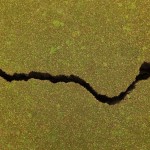What is the Enhanced Fujita Scale for Measuring Tornadoes?

Photo by Tom Pennington/Getty Images
April Bridges searches through the remains of a house she at when it was destroyed by a tornado on April 3, 2012 in Arlington, Texas
Note: The tornado Monday in Moore, Oklahoma has been upgraded to an “EF5” on the Enhanced Fujita Scale from an “EF4.”
Monday’s devastating tornado in Moore, Oklahoma, and another fatal and destructive storm in Granbury, Texas the week before have called attention to the system of tornado measurement called the “Enhanced Fujita Scale.” The Tornado in Texas measured an EF4 on the scale, the one to strike Moore is now ranked an “EF5.” But just what does that mean?
The Enhanced Fujita scale is the most recent incarnation of a system of tornado measurement invented by Dr. T. Theodore Fujita in 1971. According to NOAA the original scale was designed to 1) categorize each tornado by its intensity and its area and 2) estimate a wind speed associated with the damage caused by the tornado. It became the standard by which tornadoes were measured in the U.S.
The scale ranks storms from level F0 (gale) to level F5 (incredible). But, as you can see, it has a weakness. Namely, it is subjective as a system of measurement and “based solely on the damage caused by a tornado. If the same tornado that hit Granbury, last week had touched down in an unpopulated stretch of the plains with no people and no structures, its rank on the scale would have been significantly lower.
Hauntingly, it was an earlier tornado that hit Moore, Oklahoma in 1999, as well as one in Jarrell, Texas in 1997 that underscored the need to reform the Fujita scale. In reviewing those storms researchers determined that wind estimates, or the strength of structures destroyed, were often overestimated or underestimated using Fujita. You can find the FEMA building report on that earlier Oklahoma tornado here.
In response to the weakness of the Fujita scale researchers developed the “Enhanced Fujita” scale that went into effect in 2007. Because previous storms had been measured using the original system, they needed the new system to conform with older measurements. So the enhanced scale essentially systematizes estimates of storm damage and insists on more methodical data collection without totally revamping the scale. Here’s how it’s described by NOAA.
When using the EF-Scale to determine the tornado’s EF-rating, begin with the 28 Damage Indicators. Each one of these indicators have a description of the typical construction for that category of indicator. Then, the next step is to find the Degree of Damage (DOD). Each DOD in each category is given an expected estimate of wind speed, a lower bound of wind speed and an upper bound of wind speed.
You can read more about the Enhanced Fujita Scale and find links to other documents here.
